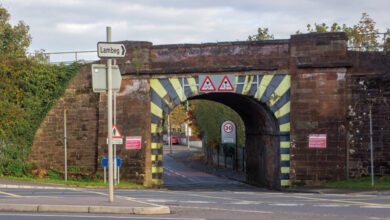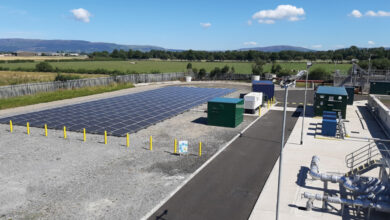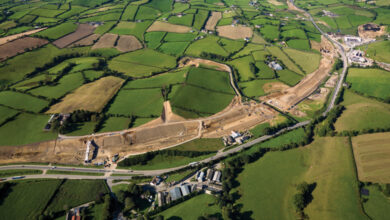Planning all-island connectivity
 agendaNi summarises the all-Island Investment Project (AIIP) jointly proposed by Ibec and CBI Northern Ireland aiming to enhance connectivity for an island of potentially 10 million people in 2050.
agendaNi summarises the all-Island Investment Project (AIIP) jointly proposed by Ibec and CBI Northern Ireland aiming to enhance connectivity for an island of potentially 10 million people in 2050.
As economic and demographic growth continues across Ireland, the AIIP has recognised that existing levels of transport infrastructure are inadequate to meet future need and have set out detailed proposals for an all-island motorway/dual carriageway network.
Currently Ireland has 100km of motorway and 400km of dual carriageway and upgrades of national and regional routes are planned for both sides of the border, however, the proposal claims that none of these plans are catering for a projected population growth of 25 per cent in the coming years.
The proposal uses the 1920 rail network as its main point of comparison. At that time over 100 years of mostly private sector investment provided extensive connectivity to every part of Ireland. Other factors, but mainly partition, meant that rail links ceased to be operated on an all-island basis and the resulting limited network mirrors the current sub-optimal motorway network. AIIP, say that replacing the rail network is not economically viable but an extensive road network, connecting the island’s urban centres offers benefits such as supporting FDI, linking businesses, driving tourism growth and enhancing access to public services.
Under their proposals, AIIP suggest that 85 per cent of the population will live within 10k of their nearest route. A connecting journey time of 20 minutes to reach the main network could be available to everyone by extending the current radial model beyond a focus between Belfast and Dublin to a ring road around the island, from Belfast to Wexford via the north west and south coasts with multiple link roads in between.
Alongside recognising the need for wider management functions for governments and local authorities, smarter communications and multi-purpose connectivity, the proposal also lays out a three phase delivery model. They aim that by 2022 the majority of the planning would be complete, by 2030 all contracts for the planning would be issued or tender ready and by 2040 the all-island comprehensive network would be complete, with plans in place for continuous maintenance and management upgrade improvements.
Finances
The current historic low cost of private sector funding for strategic infrastructure represents a huge opportunity. As both governments are unlikely to fund the proposal, appropriate models, including off-balance sheet finance, should be sought. These include exploring traditional debt and institutional finance used previously, setting up a strategic investment fund, using the European Investment Bank (EIB) and usage of the Junker Fund.
The AIIP carried out a high level initial indicative exercise and estimated that the total required investment to complete network is approximately €11.6/£9.7 billion, with an interest or servicing cost of €72.5/£60.8 per annum per working person. They recommend a long-term bond with a “currently achievable” fixed interest rate of 2.5 per cent and spreading the repayment cost across the population.
Obstacles
AIIP point to some of the key benefits of a compressive inter and intra urban transport network include a reduction of travel times, increased commercial and business links, as well as additional cost-effective opportunities for (re)locating public facilities. However, it also recognises some potential obstacles such as delays in planning if the majority or entirety of the plan is not submitted as a whole, a need for effective and coherent processing of the model, ensuring that the fund provider is not the long-term operator for maintenance and management, in order to attract pension funds post-completion and planning for the future for elements such as installation of Intelligent Transport Systems.
In conclusion the AIIP suggest that start the design of the network immediately. The report said: “Doing so will create a practical context within which to consider the complexities created by government borrowing restrictions and the demands for a rapid increase in infrastructure investment, including off balance sheet. Discussion can explore appropriate flexibility to develop current budgetary practices while adhering to the respective rules governing public expenditure in both jurisdictions.”
Five key targets for an all-island network
- Planning for a population of 10 million
- Connecting 85 per cent of population within 10km of their nearest route
- Towards a European standard
- Inter-urban connectivity
- New funding streams





